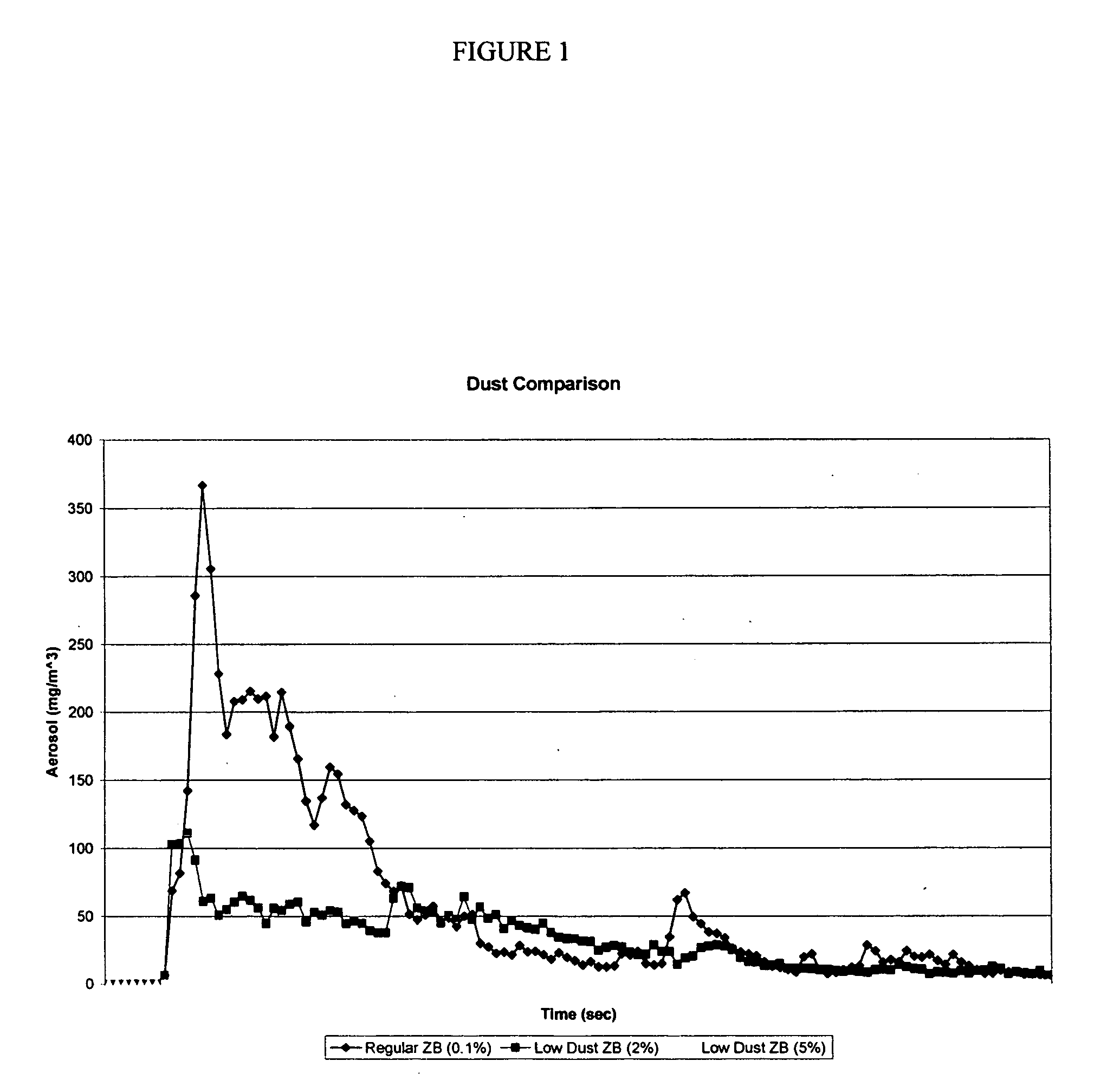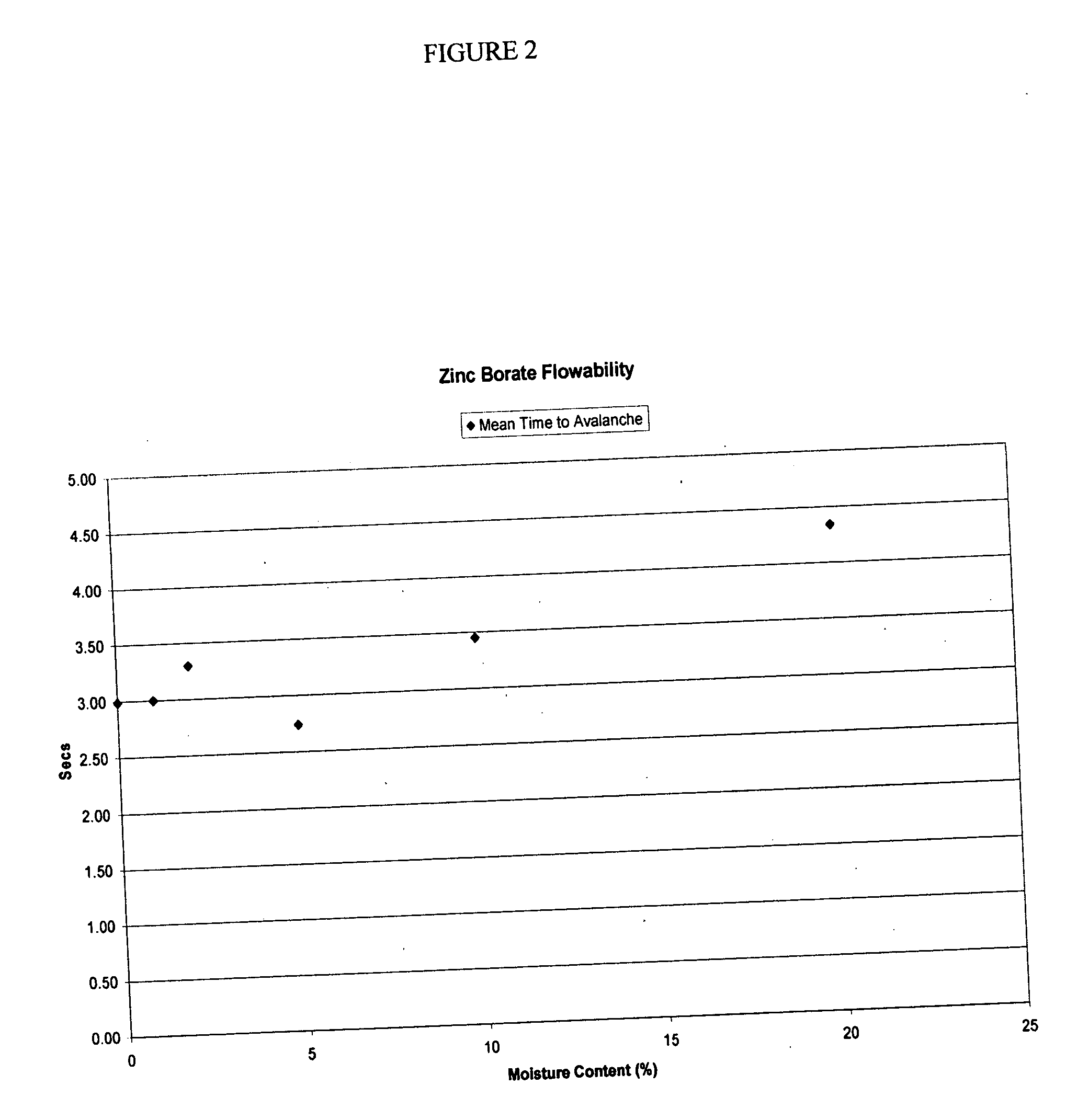Low dust preservative powders for lignocellulosic composites
a technology of lignocellulosic and composite products, applied in the field of low dust preservative powders of lignocellulosicbased composite products, can solve the problems of affecting the bond strength of lignocellulosic products, affecting the quality of lignocellulosic products,
- Summary
- Abstract
- Description
- Claims
- Application Information
AI Technical Summary
Benefits of technology
Problems solved by technology
Method used
Image
Examples
example 1
[0015] Example 1
[0016] Dust level measurements were taken on samples of regular zinc borate with a moisture content of 0.1% and low dust zinc borate with moisture content of 2%. The testing was performed using the single-drop concept described in Methods of Estimating the Dustiness of Industrial Powders using the following configuration. The test setup consisted of a test chamber measuring 16″×12″×12″ with the suction tube from a TSI DustTrak located in the geometric center of the 12″×12″ opening.
[0017] A six ounce sample was dropped from the top of the test chamber where it fell 16″ generating a dust cloud. The resulting aerosol contents were drawn into the DustTrak's suction tube and measured by the instruments optical system. Since the literature reports that single-drop testing can result in a variation of results for a given sample that are higher than alternate methods, ten samples of each zinc borate type were tested. The resulting averages of the aerosol contents for 120 se...
example 2
[0018] Example 2
[0019] The relative flowability characteristics of zinc borate with varying amounts of moisture content was compared using the Aeroflow Powder Flowability Analyzer 3250. This instrument quantifies the flowability of powders by providing a metric called the mean time to avalanche. Free flowing powders produce a shorter mean time to avalanche. Zinc Borate with moisture content of 0.1 (regular material currently in commercial use), 1%, 2%, 5%, 10% and 20% was analyzed using the Aeroflow instrument. A total of ten runs were made at each moisture level and the average of those runs is presented in Table 2 and FIG. 2. The results indicate that flowability of zinc borate powder with moisture from 1% to approximately 10% is comparable to the no moisture material, and at 5% was superior to the no moisture product.
[0020] Having described the invention, modifications will be evident to those skilled in the art without departing from the scope of the invention as defined in the...
PUM
| Property | Measurement | Unit |
|---|---|---|
| particle size | aaaaa | aaaaa |
| particle size | aaaaa | aaaaa |
| particle size | aaaaa | aaaaa |
Abstract
Description
Claims
Application Information
 Login to View More
Login to View More - R&D
- Intellectual Property
- Life Sciences
- Materials
- Tech Scout
- Unparalleled Data Quality
- Higher Quality Content
- 60% Fewer Hallucinations
Browse by: Latest US Patents, China's latest patents, Technical Efficacy Thesaurus, Application Domain, Technology Topic, Popular Technical Reports.
© 2025 PatSnap. All rights reserved.Legal|Privacy policy|Modern Slavery Act Transparency Statement|Sitemap|About US| Contact US: help@patsnap.com


